Another brick in the wall
Another brick in the wall
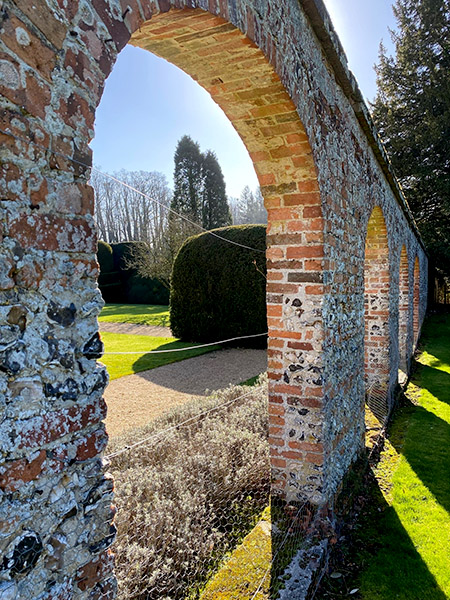 Flints are abundant in the earth around Highclere and have been used for buildings round here since Roman times. Interlaced with limestone courses they can be seen in the walls of houses, churches and orchards walls.
Highclere’s original church, which was built sometime around the year 1,000 AD, would most likely have been built using this durable and inexpensive construction.
Flints are abundant in the earth around Highclere and have been used for buildings round here since Roman times. Interlaced with limestone courses they can be seen in the walls of houses, churches and orchards walls.
Highclere’s original church, which was built sometime around the year 1,000 AD, would most likely have been built using this durable and inexpensive construction.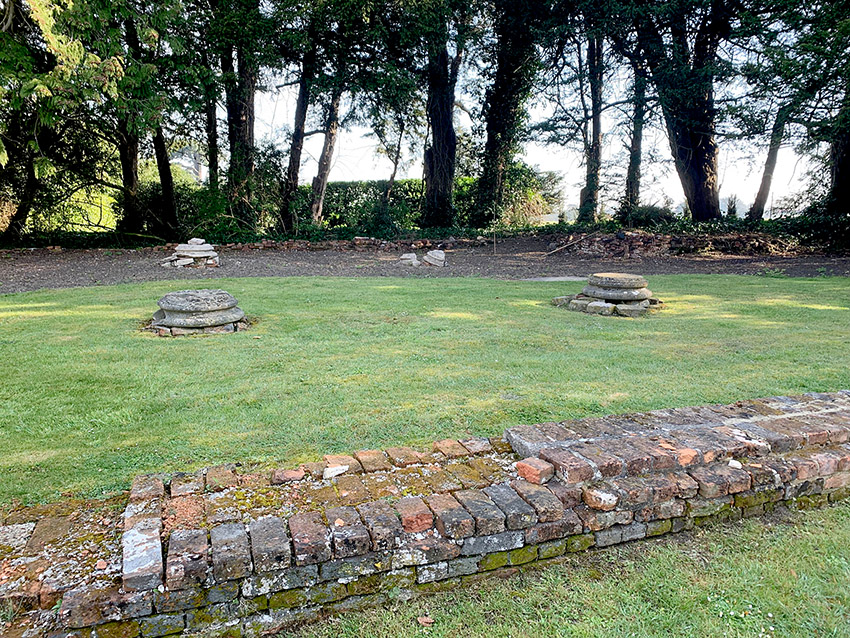 Nothing is really left of this building but the remains of a similarly ancient wall can still be seen in the ha-ha which, along with the still extant wall around the Monks Garden, are evidence to support this supposition.
Nothing is really left of this building but the remains of a similarly ancient wall can still be seen in the ha-ha which, along with the still extant wall around the Monks Garden, are evidence to support this supposition.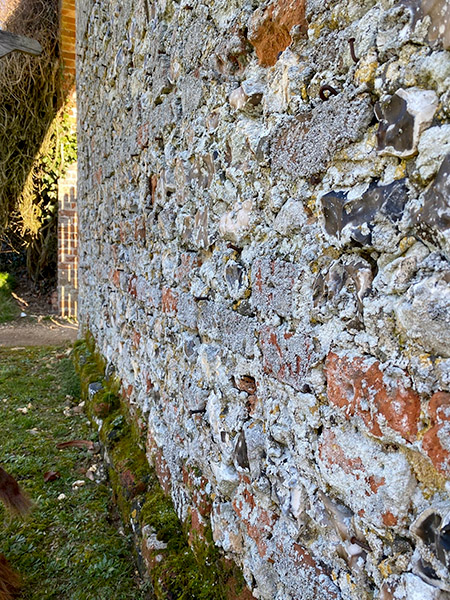 Homes tend to grow and accumulate over time. To make a wall you need a reason for it and a place for it, the necessary materials and, above all, foundations. Like anything else it is built one brick at a time which is a positive metaphor in the journey of life for most of us.
There is something entirely magical about walled gardens. Both havens and secret places in which to meander and find sanctuary, they also offer protection for vulnerable trees, herbs and vegetable. They are both practical and imaginative.
Homes tend to grow and accumulate over time. To make a wall you need a reason for it and a place for it, the necessary materials and, above all, foundations. Like anything else it is built one brick at a time which is a positive metaphor in the journey of life for most of us.
There is something entirely magical about walled gardens. Both havens and secret places in which to meander and find sanctuary, they also offer protection for vulnerable trees, herbs and vegetable. They are both practical and imaginative.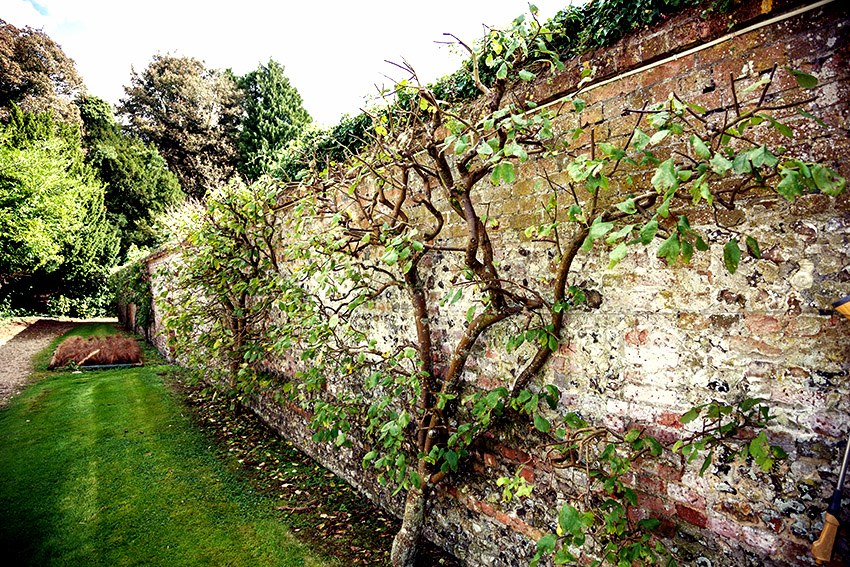 In the Monk’s Garden the original wall was probably only about 5ft high, surrounding a south sloping aspect with a frost gate in the lowest side. Only later, in the 18th century, was brick used along with coping stones (here by the 2nd Earl of Carnarvon) to add height, every brick being much more expensive than the flint and limestone original.
Over the centuries, it has undoubtedly had to be patched and mended before but during the storms last month an ancient cedar came down beside the entrance to the garden. Sad enough in itself but it also hit part of the wall. In a few minutes much of it was knocked down and crushed, destroying the work of centuries.
In the Monk’s Garden the original wall was probably only about 5ft high, surrounding a south sloping aspect with a frost gate in the lowest side. Only later, in the 18th century, was brick used along with coping stones (here by the 2nd Earl of Carnarvon) to add height, every brick being much more expensive than the flint and limestone original.
Over the centuries, it has undoubtedly had to be patched and mended before but during the storms last month an ancient cedar came down beside the entrance to the garden. Sad enough in itself but it also hit part of the wall. In a few minutes much of it was knocked down and crushed, destroying the work of centuries.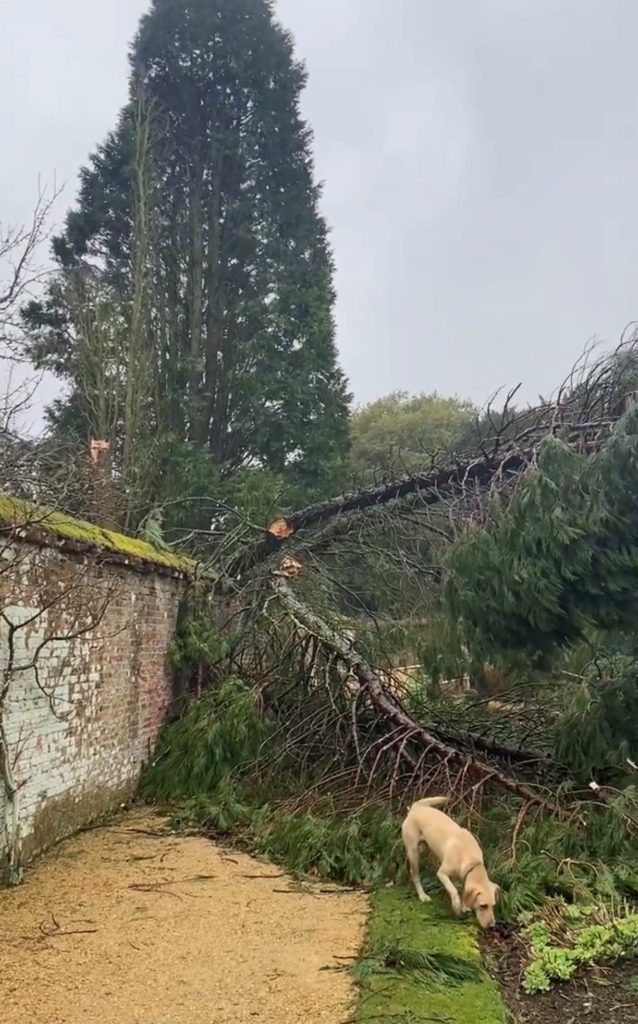 Having got over the initial shock of the damage, we now need to sort it out– cutting up and clearing and away the once majestic tree and planning how to re-build. Many of us are familiar with Pink Floyd’s album “another brick in the wall” and the tune is starting to resonate rather strongly here even though the meaning in the song is the exact opposite of what we are doing. The song describes the stifling of ideas and creativity in your school years whereas James (from the estate office) is humming it in its literal sense as he drives round the estate assessing the damage.
The word “brick” is often used to suggest character traits of reliability and stalwartness and phrases like “being a brick” were once common parlance. These are certainly qualities you expect in a wall and there does seems to be never a day when we are not trying to put another brick in the wall, to make something more robust and better able to weather the storms, whether metaphorically or in reality.
Having got over the initial shock of the damage, we now need to sort it out– cutting up and clearing and away the once majestic tree and planning how to re-build. Many of us are familiar with Pink Floyd’s album “another brick in the wall” and the tune is starting to resonate rather strongly here even though the meaning in the song is the exact opposite of what we are doing. The song describes the stifling of ideas and creativity in your school years whereas James (from the estate office) is humming it in its literal sense as he drives round the estate assessing the damage.
The word “brick” is often used to suggest character traits of reliability and stalwartness and phrases like “being a brick” were once common parlance. These are certainly qualities you expect in a wall and there does seems to be never a day when we are not trying to put another brick in the wall, to make something more robust and better able to weather the storms, whether metaphorically or in reality.
43 Comments
Thank you for a lovely read, I love to witness your work on and for the wonderful estate. Having to run our own estate in the Netherlands I can relate to a lot of your daily challenges.
Courage!
Charlotte
Always wonderful to read your story on a Monday afternoon. I look forward to it each week. Thank you Lady Canarvon for this little history lesson. Susan
I'm so sorry about the wall. CHERYL THOMPSON is right a masterpiece.
Really enjoyed this post! Sad about the cedar…..
I know very sad
I love hearing the details of Highclere's history and construction...such a rich narrative. I am so looking forward to visiting for "Living in a Castle" tour in May (postponed from 2020). I hope I get a glimpse of the Green Man, and maybe a doggie or three. Thank you for sharing your beautiful home and daily life with us; it is such a day brightener! Trudi
I will see you when you come for your tour!
You've given me several ideas here for my next sermon. Thanks. Linda
Monday Spring greetings Lady Carnarvon!
Thank you again for the educational blog with historical information and photos. So sorry for the loss of the ancient cedar and damage to a historic wall. Best of luck going forward with your team of experts to clear it all up and find a solution to the damage.
Thank you
Dear Lady Carnarvon,
How lovely and evocative your masterful use of metaphors. This one struck a particular cord with me. The task of building our lives one brick at a time is, some days, more challenging than others. We must be strong, resourceful and brave. Storms will pass. Hope will shine thru the clouds.
JoAnne
Ottawa, Canada ( come again! )
Lovely metaphors and a wonderful setting. An inspiration during a difficult time in Canada. Many thanks, Lady Carnarvon -
My Lady, I thank you for another meaningful and interesting blog from Highclere Castle. I have read your well researched and written books about the former Ladies Carnaveron and have listened multiple times to your Podcasts and marvel at your varied interests, your wealth of information and the very interesting people with whom you converse.
I thank you sincerely for taking the time to share your knowledge about so many topics. You are indeed a lovely and valuable addition to the Carnarvon family.
My husband and I visited your stunning estate during a Viking Cruise and hope to return one day after acquiring all of this additional information.
God Bless
Thank you Diane
Dear Lady Carnarvon,
Sorry to hear about the loss of a beautiful tree but also the damage to your wall.
Just a question for you from a Canadian who does know about frost but doesn’t know what a Frost Gate is.
Having visited Highclere Castle two years ago, I remember your beautiful walled garden. Very interesting to hear the history of its creation.
Thank you for a very lovely way to start Monday morning.
As warm air rises, cold air sinks. A gate at the lowest end of the walled container of plants and air allows the cold air to sink further, out of the garden, away from tender growth. A solid wall or a wall with a solid door would hold the cold.
Thank you. I shall hum that tune as I go about my invisible life here in southwest Florida.
I love to read your blogs.
Dear Lady Carnarvon
You never cease to amaze me with your lovely blogs.
Thank you once again...
Hope you get it sorted and that you have no more damage amazing place,can't wait to come and see your amazing home Janet Shirley
Please visit soon!
Lady Carnarvon .... saddened to hear of the loss of your cedar, and the damage to the wall. One can be repaired and made new, but the other can't .... but what an opportunity to plant something new. I am reminded of the Lyles syrup tins, with the lion, and the caption "... out of the strong came forth sweetness ..." you have lost the 'strong' but can replace it with something 'sweet' !! (As a gardener I can say it never does to replace something with another of the same species !)
I look forward to reports of the repairs and your pleasure of replanting something new !
Lynette .......
A wonderful, educational story, Lady Canarvon! Are there no footings left where the church once stood so you know where it’s perimeter once was? That would be fun to know!
Good morning from Fort Worth, Texas. We have several quite large oak trees on our property, giving refuge and homes for a variety of animals. Over the years they have been trimmed away from the roof, with much unsolicited advice from the workers, telling me this or that tree should be removed so that more sunlight can come through. Feeling that they were looking for ways to further line their pockets, they didn’t appreciate what I said to them. I firmly believe trees are life. Their presence is crucial to our existence. When a tree falls in our “forest,” I do indeed hear it, and grieve. Thank you for sharing a portion of your life with us. I enjoy it immensely.
Dear Lady Carnarvon,
we were lucky, we only lost a couple of tiles in the storm, and some branches off the trees, useful for the wood burner next year. I think bricks are fascinating, the town nearest to me is Bridgwater where bricks were made for hundreds of years (and glass) there are remains of lime kilns and domes all over the place. We even have a brick museum! Each and every brick will have been made by hand, each brick so small and plain and seemingly insignificant but magnificent when in their thousands together they create wonderful places like Highclere.
Jane
Thank you!
My dear Lady Carnarvon,
Thanku for your brilliant blog, beautifully written & illustrated with your fabulous photographs. It was heartbreaking to see the damage done to the wall when the tree fell on it, been through similar myself & it's daunting to repair it!
I wish you & all @ Highclere a very happy Spring Equinox & a safe & happy Summer,
Yours,
Caroline
Lady Carnarvon lovely the pictures of another brick in the wall and did you and lord carnarvon have a lovely weekend and l lovely to visit highcelerecastle
Frost gate? I tried to google to no avail...
It lets the frost roll through it - essential here
Lady Carnarvon lovely pictures of another brick in the wall and you and lord Carnarvon have a lovely weekend Thank you for your email you send me and lovely to visit highcelere castle and enjoy you and lord Carnarvon lovely sunny weather
Lady Carnarvon,
Thank you for once again reminding us that not much is permanent, but there is always rebuilding and protection from without of within, and often renewal and hope. So much we see and have seen in the past month about resolution in the face of destruction in Ukraine. Your words continue to encourage us about the future. Highclere Castle reminds me of strong resolution. Thanks again.
Martha
All of us dream of helping Ukraine rebuild - the futility of war
Thank you for this lovely and thought provoking post. It has given me cause to draw comparison to the building of a wall or structure and building a family. For me, I have such pride and love in the family we build which gives us protection and support, and when we lose a piece of the structure, we shore it up and try to go forward with the new improvements and with new members. Some of which stay on and become part of the wall forever in heart and memory, and some that break away during a storm. I am so grateful for my structure♥️ And grateful for the work your family does to keep Highclere going strong.
Be well ❤️
Nice analogy. It's always a good thing when you protect and conserve the things around us. Seems like too many people disregard the foundations of what made us be who we are today. A patched up wall, a new tree planted, it all adds up. Thank you
Your writings are always a pleasure to read. I really enjoyed this topic and love a walled garden. Hope you can find some old brick to use as replacement in the wall.
The beauty of your work has been preservation; and giving us history along with that. this was such a nice piece! Thank you for letting us enjoy reading it (and learning too). Id like to see you, do your own autobiography! How wonderful that would be. Another NYT best seller Im sure.
I don't think so!!!
I'm so sorry that you lost such a beautiful old tree, and for the damage to your centuries old wall. I lost a huge old oak tree over Christmas that bordered my property with my neighbor's. It was heartbreaking. It was probably about 70 feet tall. I don't really know why it fell, except that for the last few years we've had severe drought here in California. We've lost quite a few old trees lately because of that. They just cannot survive the loss of water, so they weaken and die. Where there was once a majestic tree that provided shade, beauty and a habitat for wildlife, there is now just open space. I am however, grateful that it did not fall on a person, or a structure.
You are so right about walled gardens being magical, and I've longed to build one for some time now on the back of my property, which would be the perfect place. You've inspired me take on this project. Thank you for the lovely post, Lady Carnarvon, and a very happy Spring Equinox to you.
I think you should do so!
This makes me sad to see the beautiful tree broken and the wall damaged but I know that you and Lord Carnarvon and the staff of Highclere will do an amazing job to restore the wall.
Thank you - we will ..
Dear Lady Carnarvon
Thank you for the beautiful imagery associated with the historic and ancient brickwork. I forgive you for mentioning the song. We can hope that they too were talking about the building process❤️
Kindest regards,
Susan Marie
Greetings from Greece !!!
A very interesting story with historical information !
A restorer will rebuild the part of the wall that has follen down, even with the same mortar
I am a restorer myself and evey new project is a new challenge !
Thank you for sharing with us !!!
Have a lovely week !!!
As an Englishman, currently working in America, I often confuse my American friends by inadvertently using English phrases. Recently I thanked someone by saying " You're a Brick!", and they stared at me aghast. Growing up, my mother had a collection of books of "jolly hockey sticks" type of school stories, from her childhood in the late 1920s. One of them was called " You're a Brick, Angela!". I wish I had kept it. Such books are now much sought after....Anyway, reading your pieces each week, I think I can say " You're a Brick, My Lady"
Thanks for this precious page of history and music. There is nothing better than explaining life through music, the soundtrack of our existence. In Another Brick in The Wall, any tragedy, injustice or abuse can only be "another brick" in a partially existing wall. Then a chorus of protest rises and turns directly against the bullies and the proud who exploit fear as an instrument of control and domination over those who have no power, be it a people, a community or a class of students; fear that forces silence and submission. "Those who decide to organize us into international, religious or ideological groups use fear to control us" (Roger Waters). We must always try to be strong and kind and build with bricks of kindness!
Downton Gazette
Dear Lady Carnarvon,
I am very sorry about the fallen Cedar and the damaged wall. However, as expressed above by numerous other readers, you have produced a beautifully written and most interesting account.
As for quotes and sayings involving ‘bricks’, possibly my favourite is:
“A successful man is one who can lay a firm foundation with the bricks that others have thrown at him.”
Best wishes with the repairs. An opportunity to add your own piece of history to that ancient wall.
Kind regards,
Jeffery Sewell
I very much like that saying!
PS If the wall can be repaired even just half as well as you have crafted your writing, then it will be a masterpiece.
Too kind
Lady Carnarvon, I always enjoy your stories and insights. The theme was particularly important to me today. I am a vigil volunteer at a local hospice. Today I sat with a gentleman as he breathed his last breath. His family was enroute but had not yet arrived. His death was peaceful. As I write I am picturing myself within your garden. Yes, trees fall, knocking down walls and it is momentarily sad. We are, yet again, reminded of loss and rebuilding. As I think of my departed gentlemen, and all of the destruction in our world, I am heartened to know that life goes on, walls can be mended, and there is hope.
So sad to see the old building and trees down but maybe something sentimental and useful can be made out of the remnants that can be placed in the new build?
Dear Lady Carnarvon
I loved the piece for today and I am sorry to see the old Cedar succumb to the storm. Your story reminds me of our own life in a way.
We build the bricks of our life and when the time comes we know our bricks will tumble down to be replaced and kept going by the bricks we leave behind. So your walled garden will go on after repairs and your Cedar, although greatly missed, will be replaced by something new to carry on for many years to come. Adapting to change is always a story to be written and I am sure in time to come someone will write the story of your Cedar and this will be one legacy you leave behind for Highclere.
Did you find someone near you who works with wood? Your Cedar could become something beautiful again in the hands of a wonderful wood worker. Worth thinking about :) A good artisan would just love to be able to work with Cedar and would take great care of the wood until it had seasoned and was ready to use.
We have been almost washed into the ocean and extensive flooding has ripped apart many towns and communities who have never before experienced water through their homes and towns. The resulting pictures we see are just heartbreaking and I cannot imagine cleaning up and starting again after having lost everything. God Bless the huge number of volunteers who have come forward amply armed with tools of every description, unasked, and ready for work. Ukraine needs people like these to restore their country eventually and God help and protect the Ukrainian citizens.
Be well and stay safe and do let us know the continuing story of the walled garden repair and new tree?
Joy
Lady, thank you for sharing this, but so sorry about the lovely cedar tree & the damage to the wall. I will visit some day for sure to see the beautiful wall, ect..
Barbara B x
Dear Lady Carnarvon,
First and foremost, let me thank you for sharing and inviting us into your lovely Highclere Castle for a guided tour on Saturday, February 26,2022. Your welcoming presence , along with our knowledgable tour guide, was so considerate. Angel, my husband, and our son Robert, who lives in London and I are great fans of "Downton Abbey" ; we arrived early so as to roam through your enchanting grounds and I picked up a few pinecones that had fallen from majestic trees that have been living securely and safely on these noble grounds. It felt very special that I could bring these mere, but yet precious, pinecones home with me. It 's like bringing back a little part of this place that you so lovingly take care of every day. Although difficult to explain, I was moved by the beauty that surrounded me.
I know that something will come of the fallen Cedar tree. We saw two massive tree trunks that looked as they had been converted into settees ; it was truly ingenious. The wall will be rebuilt again by your skilled workers, who will do it with love and reverence for the Castle. I can't wait to go back and see it when we return in a year or two.
Thank you for the lovely and delicious lunch; and for my signed " Seasons at Highclere" book. We also picked up a few more gifts at your gift shop for our family and friends. We own"The Rose Tree Cottage" shop in Coral Gables , Florida. We have sold many of the Downton Abbey gifts . I think the books would be a great asset for us as well.
Until we meet again, I remain,
Jossie Esquijarosa
What a timely post for me personally. Two of my sons, my husband, my grandson, our contractor (who is also hubby's golfing buddy), and I carried and placed about 5,000 bricks yesterday to create a new courtyard in front of our house. When done, it will add another spot to sit with tea and enjoy the wild birds.
With all of our Oregon wind and rain, it's not uncommon for us to have trees fall as well. As in the beginning of The Chronicles of Narnia, I hope you will find another use for wood from that majestic tree that fell on the beautiful wall.
Well done!
I’m sorry to hear about your ancient tree destroyed by the storms. I hope it wasn’t a cedar brought in from Lebanon. Those are very special cedars, as treasured in biblical times. Are you going to repurpose the cedar for castle repairs or furniture? Your “tree man” must be a hit with visitors, such a great repurposing of a tree!
You all must go! We had the pleasure of meeting Lord (indirectly - as he returned from working, I presume in the garden) and Lady Canarvon on 14/03/22! Lady Canarvon met us at the front door and spoke as elegantly as she writes! A real treat to "meet" you and see your beautiful home! History was at every turn! We so enjoyed the wonderful tea and meeting your butler. He was great fun to chat with and I will cherish my signed book! A memorable day for sure!
It occurs to me when viewing the fallen cedar, that the replacement cap stones will take years to acquire that lovely coating of moss! Very sad and yet, Lady Carnarvon, you display your usual optimism in your telling of the event.
Dear Lady Carnarvon:
Thank you for your Monday blog.
I was out-of-town when it was written. Today is the first opportunity I have had to get caught up on my reading.
I like the comparison to a factual event and a song. The accompanying pictures just brought everything forward.
Sorry that you lost an aged Cedar. Hopefully, a masonry will be able to help you restore the fence. Perhaps a new gate may reconnect the damaged section(s).
Until next week, all the best to you.
Perpetua Crawford
thank you so much
Stumbled across this post .. gave me a reminder that for some time I am in need to build a brickwall to keep the strong winds from blowing across the valley up on the hill into my garden. Also so I can move the fig tree to give it a warmer and safer place from those winds to grow ... got to hurry up though before he gets to big to move. Nice read by the way :-) ...
Wishing a good day ..
Leave a Comment
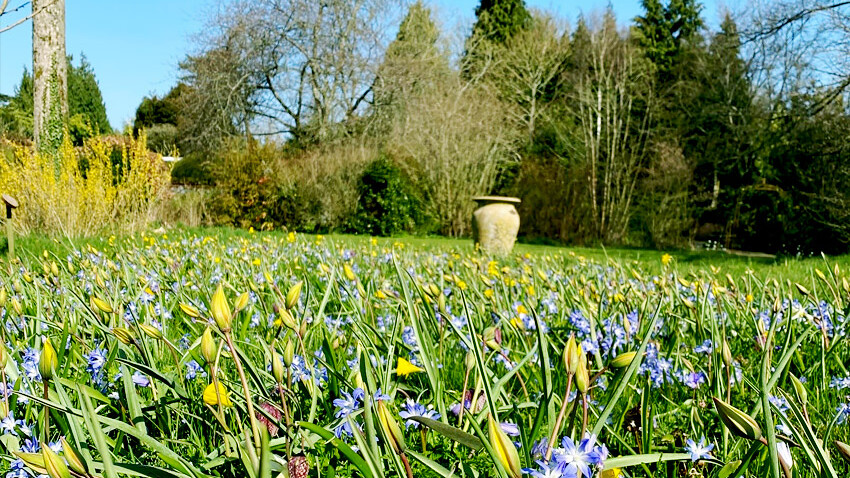
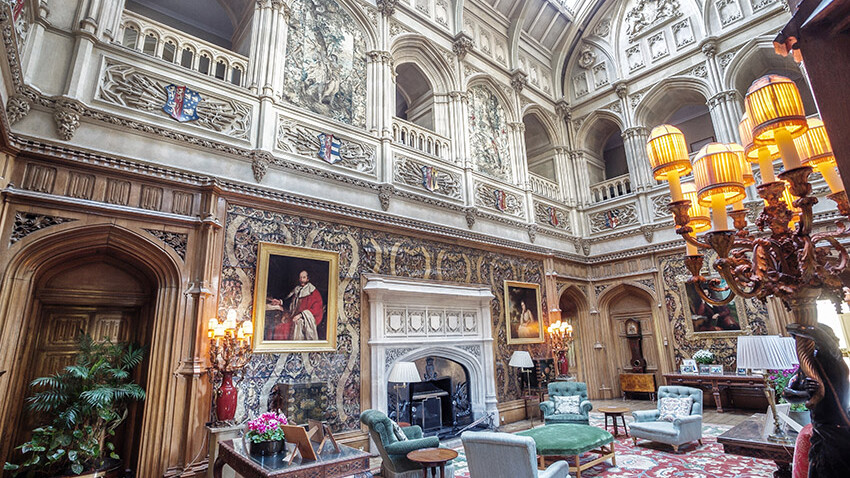
- Christmas
- Community
- Dogs & Horses
- Egypt & Tutankhamun
- Entertaining
- Farm
- Filming
- Gardens
- History & Heritage
- Daily Life
- Royalty
- Cooking
- Interiors
- Heroes
- Architecture
- Cars
- Conservation
- Downton Abbey
- Events
- Gardens & Landscape
- Highclere Castle Gin
- History
- Planes
- Restoration
- Stories & Books
- Uncategorized
- Visitors
- Wildlife

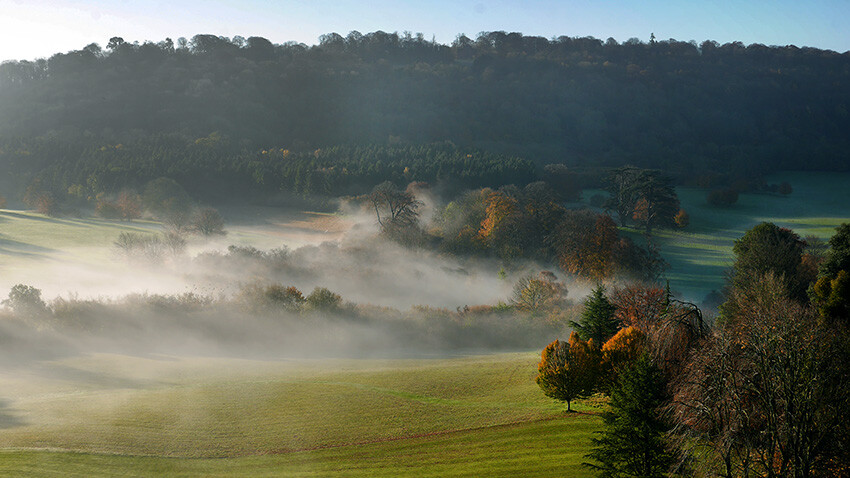

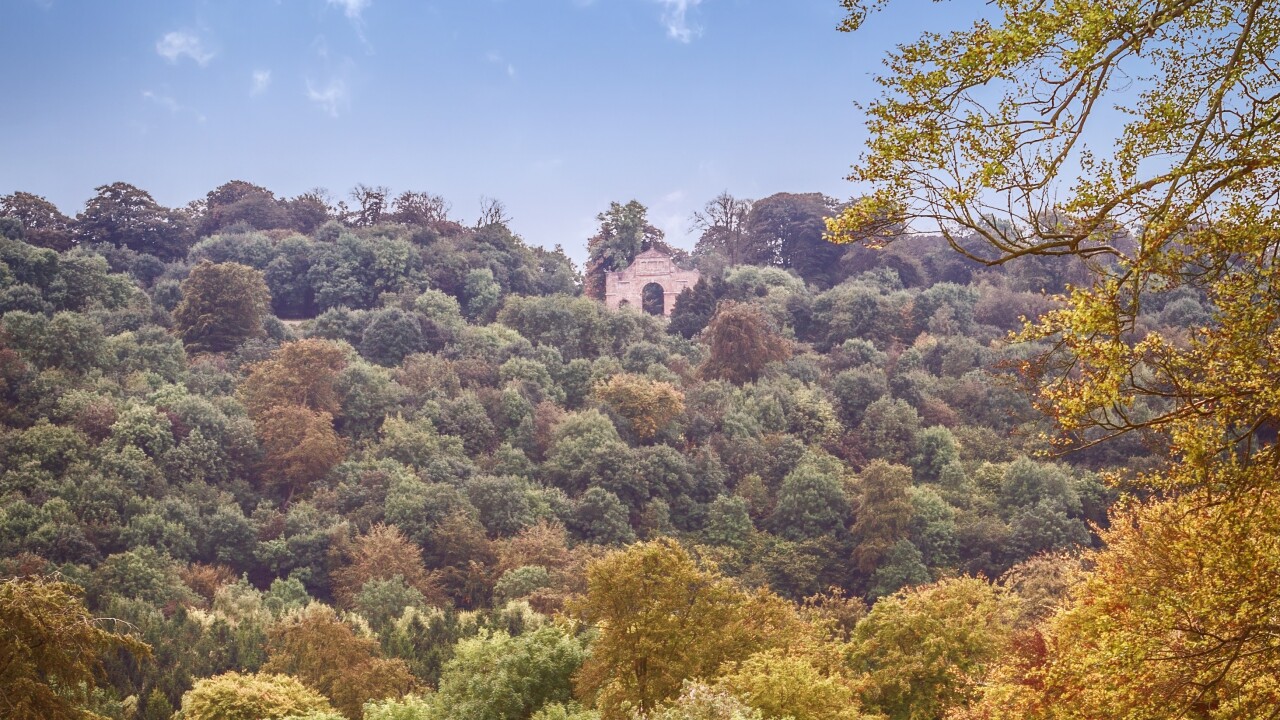
Lady Carnarvon, this story today is a masterpiece! Cheryl
Thank you Cheryl